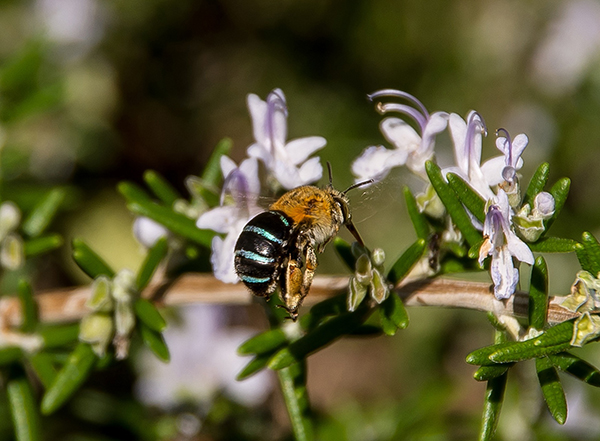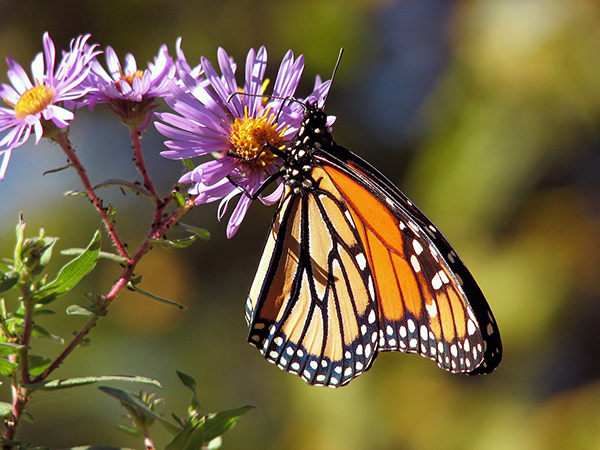With the weather finally beginning to warm up and numerous spring flowers on show throughout the Wheatbelt, you may be noticing lots of pollinator species out and about at the moment. Birds, bees, hoverflies, beetles, butterflies and moths are just some of the important pollinators that help our native plants and production crops to fruit, set seed and reproduce.
Plants can be pollinated in different ways with many benefiting from insects or vertebrate animals transferring pollen as they move from one plant to the next. Birds and flying insects are particularly helpful as they can visit many plants over a large area throughout the day. These animals pick up pollen on their body when they stop at a flower to drink nectar, or collect pollen as food, and then deposit some at the next flower they visit. Certain native bees have a special ‘buzz pollination’ technique that is important for some plants, like Hibbertias, Dianellas and tomatoes. Even some marsupials, like the Honey Possum and Antechinus, can pass on pollen when they forage on Banksias or other flowering shrubs and trees.

A number of cereal crops such as wheat and barley, do not need animals to help with pollination as their pollen is spread by quite efficiently by the wind, but numerous other crops including lupins, sorghum and especially canola, achieve better pollination when insects give them a helping hand. Some native plants are highly adapted to being pollinated by particular animals. They do this by:
- shaping their flowers to maximise how much pollen sticks to a bird’s head as it reaches its beak in for a drink of nectar
- developing flowers that look or smell like certain insects so that others of that species are attracted thinking they have found a potential mate (only to come away with no love, just a dousing of pollen).
Different pollinating animals become active at different times of year, but as spring is the main flowering season for the majority of plants, it is also the most active season for the insects, birds and other creatures doing the pollinating. You may have noticed a variety of butterflies in recent weeks, and honeybees have been seen swarming in the region as they look for new hive locations. Birds like honeyeaters and wattlebirds need more energy to breed and raise chicks in spring as well, so will drink more nectar and also feed on the pollinating insects around flowering plants.

If you want to support native pollinators or encourage them to visit your garden or crops, there are a few things you can do. Planting a diverse mix of shrubs that flower in different colours and at different times of year will help you attract a range of pollinators throughout the seasons. Some animals like the Honey Possum need this as they require a pollen food source all year round. You can also make ‘native bee hotels’ by drilling variously sized holes into pieces of wood and other materials ranging in density, which that the bees can use to set up home in. Establishing water availability and dense shrubs for habitat can be useful in attracting bird pollinators. It is also very important to be cautious and selective about using insecticides on your property.
Natural, active pollination by insects, birds and mammals typically benefits both the plant and the animal. It even has benefits for us, whether it’s a pleasing garden, increased crop yield, or healthier ecosystem. It also creates one heck of a springtime show to behold!
Images of Blue-banded Bee and Monarch Butterfly from pixabay.com
Image of Willy Wagtail from Wheatbelt NRM's 2016 Youth Photography Competition


